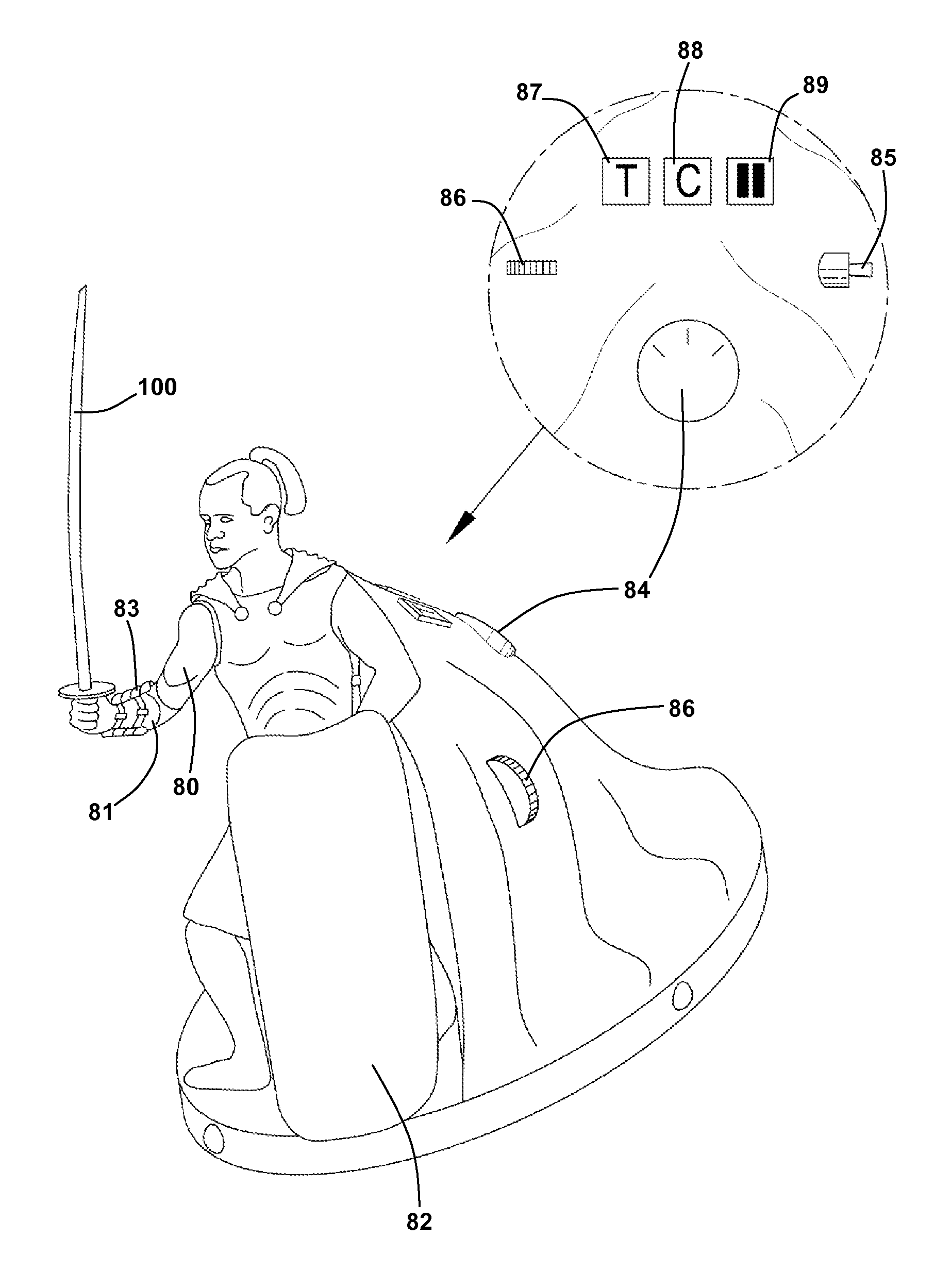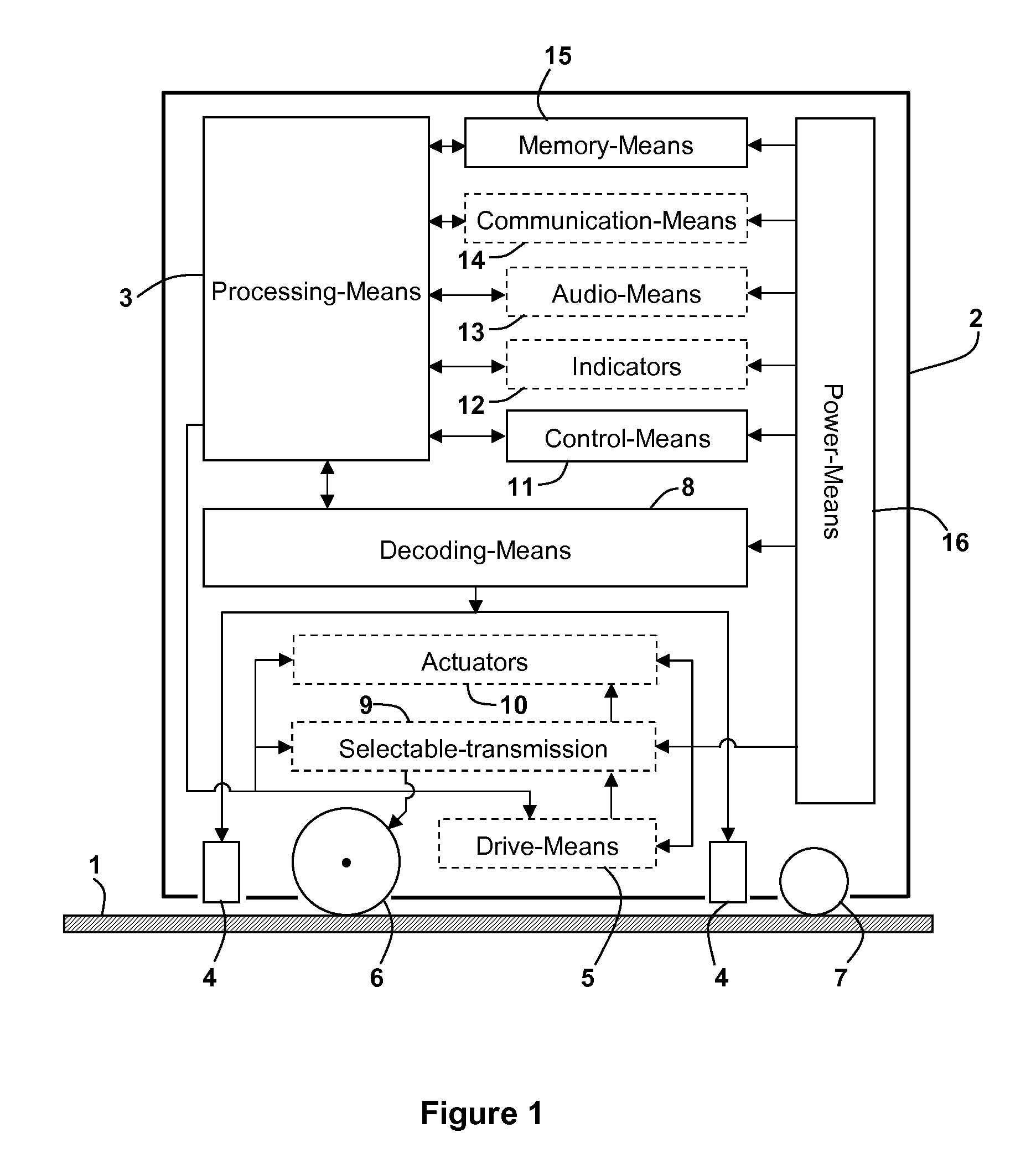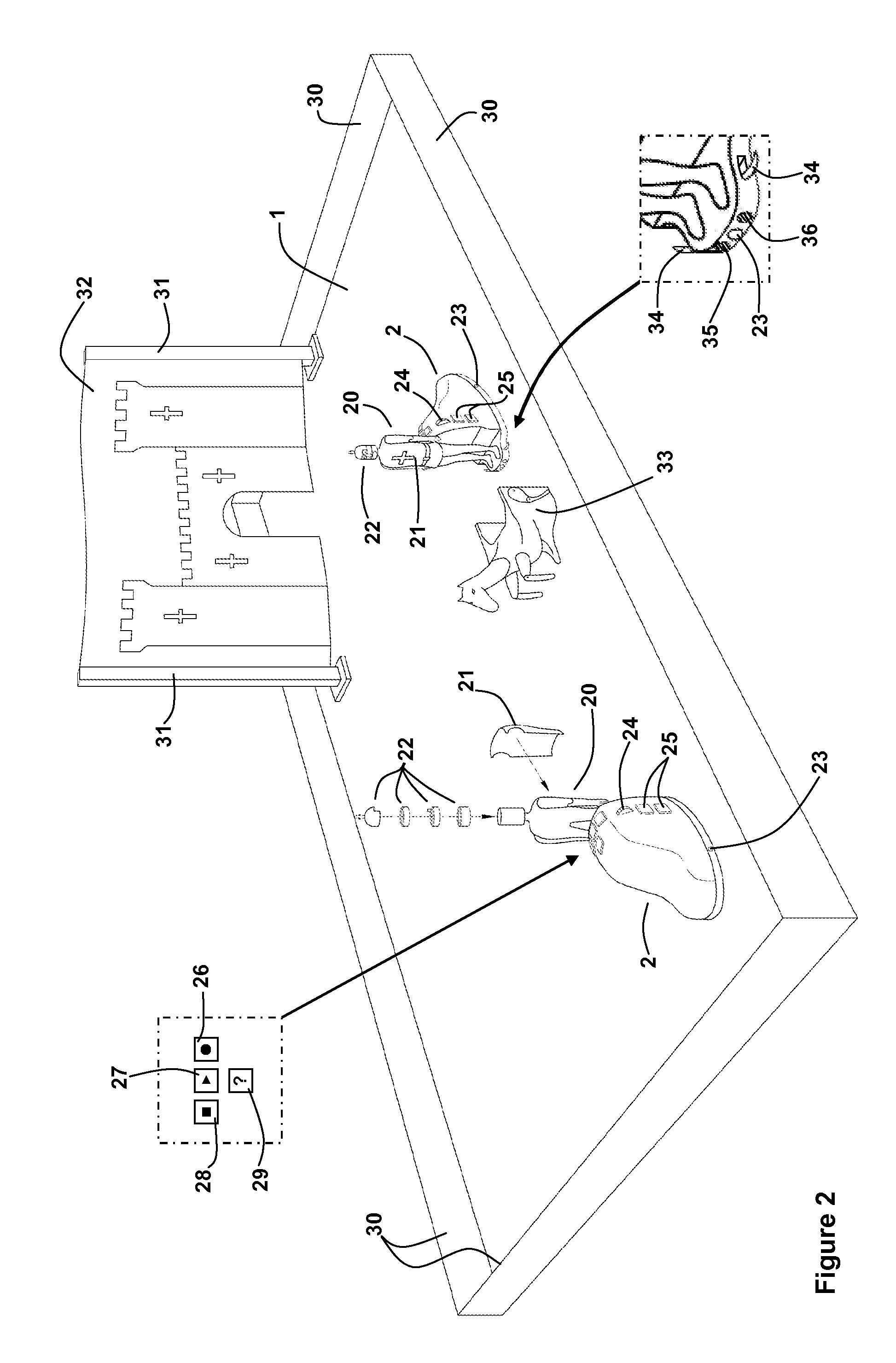Toy systems and position systems
a technology of position system and toy system, which is applied in the field of toy system and position system, can solve the problems of unsuitability for many children, especially younger ones, and children may quickly become bored
- Summary
- Abstract
- Description
- Claims
- Application Information
AI Technical Summary
Benefits of technology
Problems solved by technology
Method used
Image
Examples
Embodiment Construction
The Toy System
[0061]A variety of different toys and games may be derived using the methods in this description and these are described, in the general case, below. To further aid understanding, specific examples of such toys will be provided later.
[0062]The toys described below share the following common features, illustrated in FIG. 1.[0063]1) One or more, wholly or partially position-encoded surfaces 1 over which toys may roll. Where multiple surfaces 1 are used, means may be provided for the toy(s) to move from surface 1 to surface 1.[0064]The surface 1 encodes at least one dimension such that the relative or absolute coordinate(s) of a sensing-point, generally designated 4, sensible to said codes, may be determined. Cartesian, Polar or any other coordinate arrangement may be used. Without limiting the generality of these statements this document will, for convenience, assume the surface 1 is coded with two-dimensional Cartesian coordinates. The surface 1 encoding and decoding ma...
PUM
 Login to View More
Login to View More Abstract
Description
Claims
Application Information
 Login to View More
Login to View More - R&D
- Intellectual Property
- Life Sciences
- Materials
- Tech Scout
- Unparalleled Data Quality
- Higher Quality Content
- 60% Fewer Hallucinations
Browse by: Latest US Patents, China's latest patents, Technical Efficacy Thesaurus, Application Domain, Technology Topic, Popular Technical Reports.
© 2025 PatSnap. All rights reserved.Legal|Privacy policy|Modern Slavery Act Transparency Statement|Sitemap|About US| Contact US: help@patsnap.com



